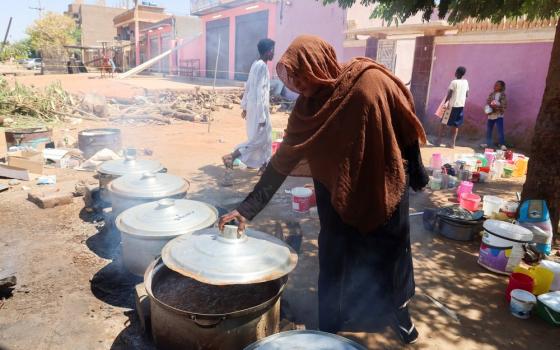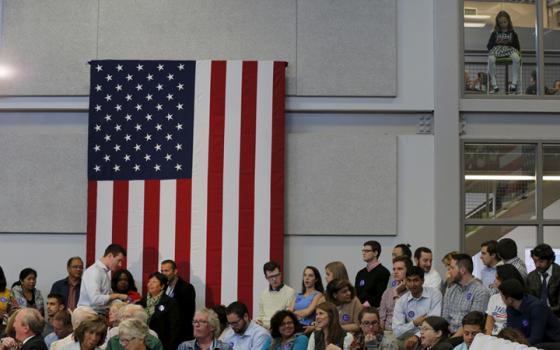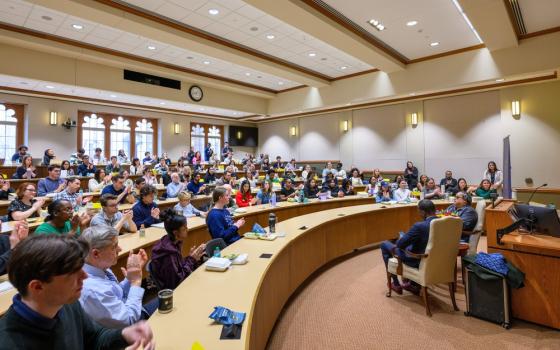An NCR Editorial
The report of the John Jay College of Criminal Justice on the causes and context of sex abuse of minors by priests is an important landmark, flawed as it is, in understanding this awful crisis in our church.
Any attempt to quantify and explain a reality as ugly as sexual abuse of children by priests was bound to draw fire from many sides. The volatility of the response to the report is at once reflective of the severe limits of the study and the ongoing frustration of Catholics and the wider society in trying to understand how the leaders of an institution that professes Jesus could behave so badly when its own ministers were destroying the lives of the community’s children.
Some of the areas deserving criticism are obvious. As significant, if not even more important, are areas of inquiry that are simply missing, especially in understanding the context.
But first let’s begin with the positives:
- In combination with the first John Jay report released in 2004, this is the first examination of its kind of any institution regarding abuse of children, and more should follow suit. One of the results of the clergy sex abuse crisis is a growing awareness of how widespread the problem is. A recent Washington Post story details the trail of a teacher who skipped from school district to school district and organization to organization, abusing children at every turn. He was finally prosecuted and given a 30-year sentence. He could have been brought to justice sooner -- sparing kids the horrors of abuse -- had administrators not been more interested in getting rid of him than in protecting children. The attitude seems an institutional hazard wherever children are involved.
- Unfounded presumptions of the causes were debunked. Celibacy, say the researchers, was not the issue, nor was homosexuality. For some, the conclusions remain unpersuasive and it is likely that nothing could convince otherwise those who believe that gays are the cause of the priesthood’s problems or that all sexual aberrations among clergy are traceable to mandatory celibacy. At least John Jay gives us scientifically established base lines for considering the realities within the U.S. Catholic world.
- The deficiencies of seminary education in the area of human formation are bared, and not from an ideological point of view. The study also establishes that follow-up evaluations of priests are inconsistent from diocese to diocese and often don’t occur at all after the first five years. The performance of pastors is rarely assessed in any professional or objective manner.
- The report contains a significant amount of data about priests’ perceptions of their sexual identity, pre- and post-seminary; sexual activity of seminarians and priests (much higher, certainly, than most bishops would care to admit); and whether certain sexual practices and proclivities among priests were more likely to be associated with sexual abuse of children.
The report makes clear that this level of examination of the crisis is only a start. It satisfies some of the curiosity about individual abusers and what kind of behaviors might raise warning signs. The hope is that more studies will follow and that John Jay will allow other academics and other disciplines to examine the data they collected.
The deficiencies of the report can be captured in two questions: “Is the data reliable?” and “Where are the bishops?”
The short answer to the first is: As far as it goes. Of course, it doesn’t go nearly far enough. For starters, the researchers were left to rely almost solely on data volunteered by the bishops, who paid for more than half the cost of the study. That is something akin to the Securities and Exchange Commission looking into the workings of a bank based on information the corporation’s lawyers decide to hand over for an investigation the bank is financing.
We have no reason to question the integrity of the John Jay researchers. Those involved in the study have emphasized that the bishops never interfered with their efforts. Yet any reasonable observer would agree that the process simply doesn’t pass a basic test for avoidance of conflict of interest, and particularly not for avoidance of the appearance of conflict, the standard we apply to public servants and agencies. The researchers did the best with what they had, but they weren’t, in the end, certain of how much they had.
In other words, this is not a process that would pass muster in secular society.
John Jay researcher Margaret Smith, in answer to a question from NCR, was frank in allowing that it was logical to question the numbers for two reasons. First, almost 100 percent of the cases received by the John Jay researchers had convincing and abundant corroboration and evidence, and that is hardly the case in the actual histories of dioceses. Except in clear cases where a priest admits abuse or where there is a preponderance of evidence, officials still debate what constitutes a credible accusation and there is still confusion over which complaints should be referred to diocesan review boards.
Second, just as the report was being finalized, a Philadelphia grand jury report led to revelations that at least two dozen priests who remained in ministry faced credible accusations of child abuse. How many more Philadelphias exist? No one knows because no oversight of the data collection exists. What we do know is that when law enforcement becomes involved or legal proceedings force disclosure of documents, the numbers go up -- and sometimes are much greater -- than those initially volunteered by church officials. While bishops, chancery officials and their review boards may be effective in dealing with abuse cases in many places, no one knows for certain whether church officials are following their own rules.
As Nicholas Cafardi, a canon lawyer, civil lawyer and member of the first National Review Board, explained recently, so many levels of the system put in place by the bishops as a result of their 2002 Charter for the Protection of Children and Young People depend on trust. The bishops ask us to trust, but they’ve provided little means to verify. How seriously can anyone take the process when Fabian Bruskewitz, bishop of Lincoln, Neb., makes an open mockery of the process? He’ll have nothing to do with it and has faced no consequences.
The short answer to the second question regarding the bishops is that they are almost nowhere to be found in the report. The researchers make the point that church leaders acted first to protect the institution and that they didn’t meet with victims until very late in the scandal. They also suggest that the reaction of church leaders was similar to those one might find in other institutions and that their hierarchical structure is similar to that found in police departments. Neither comparison is terribly flattering; in fact each is rather depressing to contemplate.
As the five-year study was being concluded -- and the researchers were pinning much of the blame for abuse by priests to the influences of the sexual revolution in U.S. culture -- the scandal was breaking in Ireland, Germany, Holland, Belgium and elsewhere. It was certainly not the charge of John Jay researchers to explain the crisis in light of the global church. Nor was it, we presume, to dig into the clerical/hierarchical culture of Roman Catholicism and the breach of sacramental life that the scandal represents. However, it is our opinion that it is impossible to understand the context of this scandal and its many components without understanding that culture.
The situation in other countries where the crisis has surfaced, with its familiar patterns of abuse, secrecy and misuse of authority, indicates a larger systemic problem, the source of which is much deeper than the sexual revolution of the 1960s. While the John Jay study may shed some light, within limits, on individuals and their aberrant behavior, the real scandal never began or ended with sexual sin. The scandal that still angers and frustrates Catholics involves the ineptitude of bishops over many decades and their deliberate cover-up of crimes against children. The John Jay report is an important first step in understanding the scandal. However, until the hierarchy gets serious about facing down the real demons of its own clerical culture, the crisis festers, largely unresolved.



